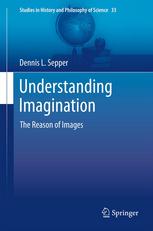

Most ebook files are in PDF format, so you can easily read them using various software such as Foxit Reader or directly on the Google Chrome browser.
Some ebook files are released by publishers in other formats such as .awz, .mobi, .epub, .fb2, etc. You may need to install specific software to read these formats on mobile/PC, such as Calibre.
Please read the tutorial at this link: https://ebookbell.com/faq
We offer FREE conversion to the popular formats you request; however, this may take some time. Therefore, right after payment, please email us, and we will try to provide the service as quickly as possible.
For some exceptional file formats or broken links (if any), please refrain from opening any disputes. Instead, email us first, and we will try to assist within a maximum of 6 hours.
EbookBell Team

5.0
110 reviewsThis book discusses that imagination is as important to thinking and reasoning as it is to making and acting. By reexamining our philosophical and psychological heritage, it traces a framework, a conceptual topology, that underlies the most disparate theories: a framework that presents imagination as founded in the placement of appearances. It shows how this framework was progressively developed by thinkers like Plato, Aristotle, Descartes, and Kant, and how it is reflected in more recent developments in theorists as different as Peirce, Saussure, Wittgenstein, Benjamin, and Bachelard. The conceptual topology of imagination incorporates logic, mathematics, and science as well as production, play, and art. Recognizing this topology can move us past the confusions to a unifying view of imagination for the future.